Discovering Ceylon: A Journey Through Time
- Clare Flynn

- Jun 19
- 4 min read
Updated: Jul 20
Routes Taken by Norton and Stella
I thought it might be interesting to recreate the routes taken, both independently and together, by Norton and Stella. Since the novel spans the whole island, I wanted to include a map in the book. Jane Dixon-Smith of JD Smith Design created a beautiful map for me, which serves as the frontispiece to the book. My publisher, Storm, was happy to include it. Here it is:
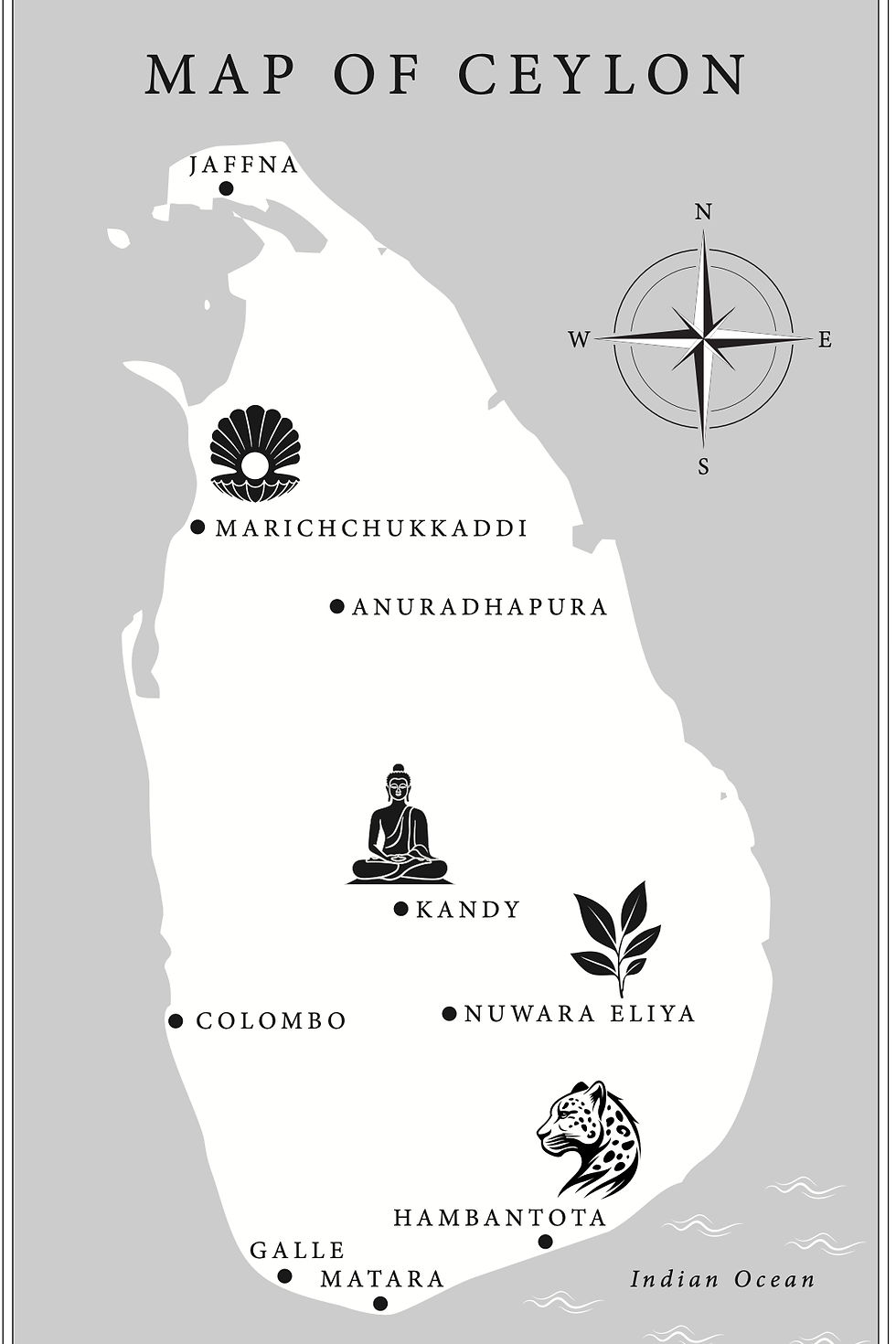
Stella and her party, upon disembarking from the Dambula, don’t linger long in Colombo. They stay just one night at the Galle Face Hotel, which you can read about here. Afterward, they head off by train to Anuradhapura. They spend a night in a rest house before proceeding north by bullock cart.
The Ancient City of Anuradhapura
It's a pity they didn’t stay longer in Anuradhapura. Sadly, I didn’t visit it on my research trip. This ancient city is now a UNESCO World Heritage site, notable for the well-preserved ruins of the ancient Sinhalese culture. It serves as a great jumping-off point for the famous rock of Sigiriya. Although Sigiriya doesn’t appear in the book, I visited it back when I was fit enough to climb the 1,200 steps to the summit and enjoy the spectacular views.
The Risks of Travel During War
The rest of Stella’s journey took her into territory I had not visited. When I traveled to Sri Lanka in the past, it was during the height of the terrible civil war. In fact, a bomb went off in Colombo while I was there, so I couldn't visit the Northern province. When I planned my trip last year, I had no idea I’d be writing about this area or the pearl fishery at Marichchukkaddi. I had to rely on my imagination and a lot of research.
That entire region was a no-go for tourists during the civil war. If you're interested in this topic, I highly recommend the fabulous Brotherless Night by V.V. Ganeshananthan, which won the Women’s Fiction Prize in 2024.
The Pearl Fishery at Marichchukkaddi
When you read The Star of Ceylon, you will understand why I had no desire to visit the pearl fishery. Not that it operates anymore. The place sounds desolate, and back in 1906—the last year that the British government controlled it—it smelled overwhelmingly of rotting oysters.
"The pearl fishery was an enormous temporary encampment accessible only from the sea. It consisted of a collection of hastily assembled wooden huts thatched with coconut palm and arranged in an orderly grid of streets. The site was situated on the northwest coast at Marichchukaddi near Arippu and inhabited only during the pearl fishing season. The most striking feature of the place was that stinking midden of rotting molluscs. It was odd how something as beautiful and refined as a pearl should be found amidst rottenness and decay."
A Historic Encounter in Kandy
Stella and Norton meet again in Kandy, the capital of the Central Province and the former capital of the Kingdom of Kandy. This kingdom was ruled by kings until a final battle with the British ended their monarchy. A highlight of any visit is to the Temple of the Sacred Tooth Relic, located beside a lake constructed by Sri Vikrama Rajasinha, the last king.
Norton’s house, like Leonard Woolf’s in real life, overlooks the lake. The tennis courts where he plays with Cynthia still exist at the top of the lake today.
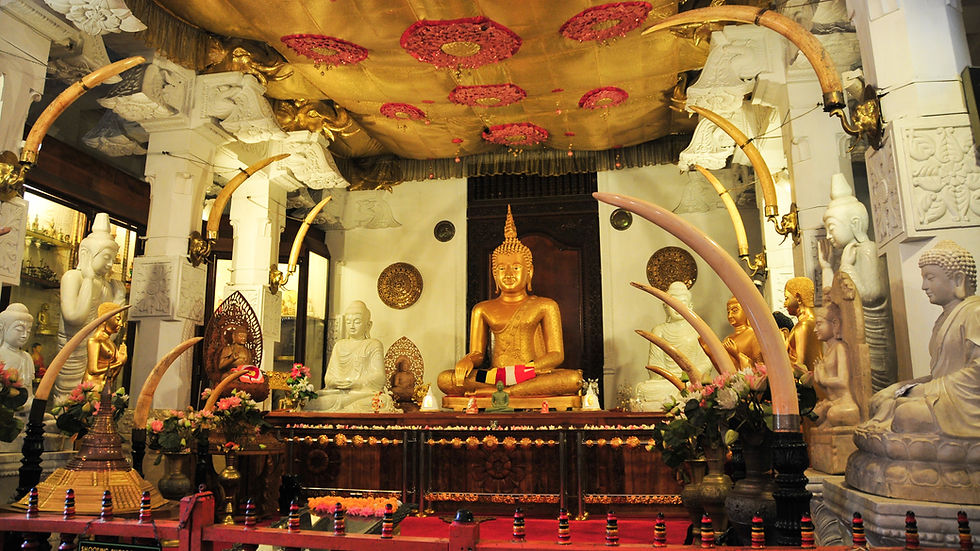
Researching the Tamil People
Stella and her father are researching the Tamil people. They contrast the Tamils of South India with the indigenous Tamils of the Northern Province and the Tamil tea workers brought in by the British from India to work on the plantations. The tea country is primarily in the central province, particularly around Nuwara Eliya. This town resembles Little England, boasting Tudor-style houses and well-manicured gardens.
Nuwara Eliya is a hub for vegetable growing as well as tea. The town features a golf club, founded in 1889, and includes hotels that feel like time-warped relics from Victorian and Edwardian England.
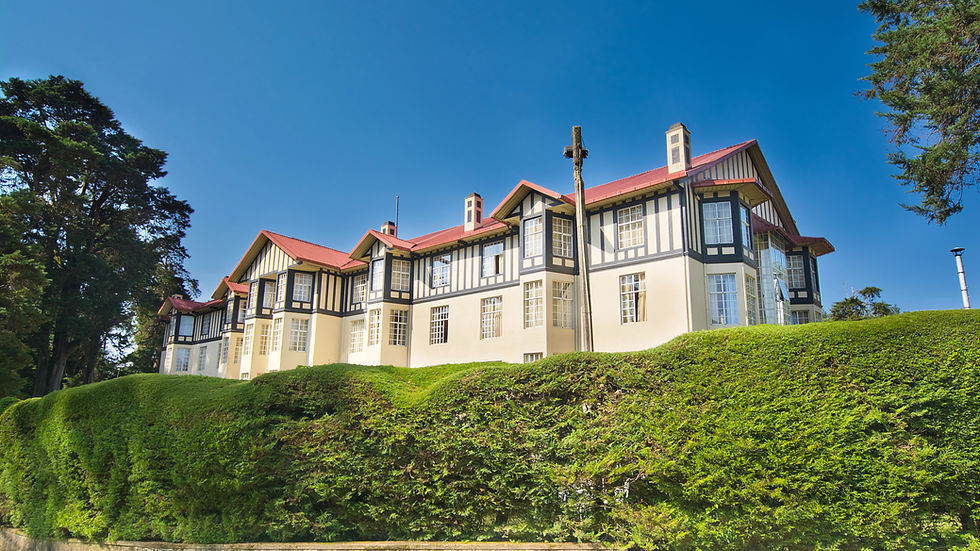
The Southern Province and the Hunt
Another key location in the book is the Southern Province, particularly the area around Hambantota. Stella, Norton, and others embark on an ill-fated hunting trip in the scrub jungle.
"The tracker put a finger to his lips and pointed at the top of the rock face. At first, Norton could see nothing. He strained his eyes, trying to identify the source of the tracker’s attention amid the gloom of the forest canopy. And then he saw the beast. The leopard lay stretched out on the rock surface in front of what appeared to be a cave. The creature was about nine feet long from nose to tail, its breast and legs speckled with black spots, and the bulk of its muscular body covered in black rings with brown centers. Its eyes were the color of amber. Norton watched intently as Geethan kept one hand raised, indicating they should all wait. Beside him, he sensed Stella, her gaze fixed on the beautiful animal."
I traveled to Hambantota in the 90s. However, this time, I journeyed only to the southwest coast, south of Galle, and didn't reach the game reserve at Yala or the salt pans. Here is one of my old faded snapshots of the salt flats.
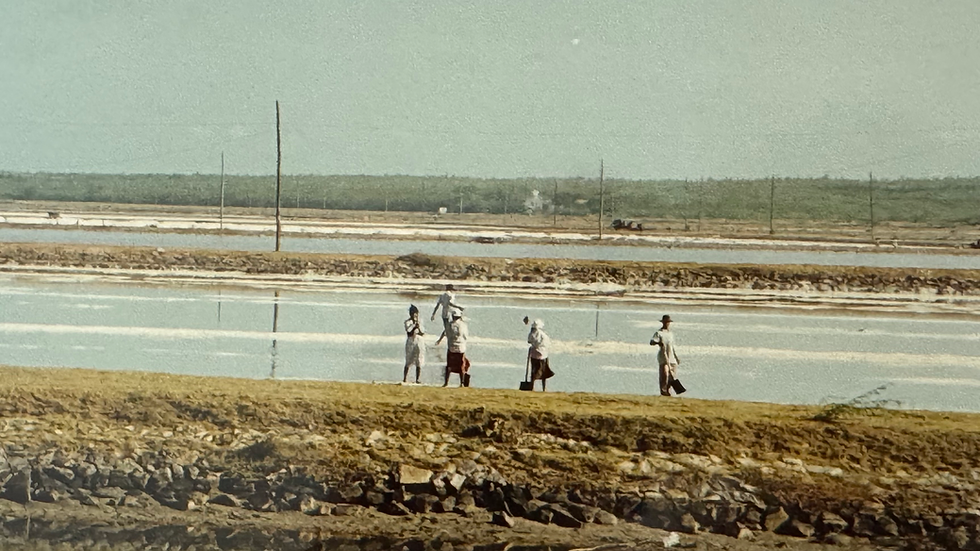
Conclusion
I hope the map and the images will help you orient yourself within this journey through Ceylon. Finally, I’ll leave you with a picture of the plantation bungalow where I stayed in the tea country. This bungalow served as inspiration for the McGregors’ plantation and the gardens for the government agent’s residence in Kandy.








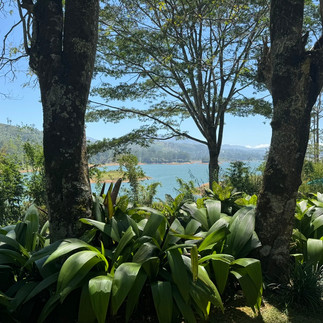






Comments